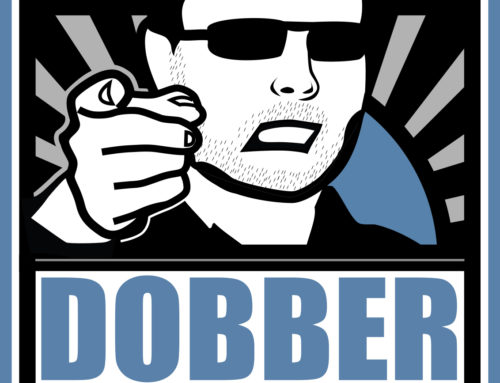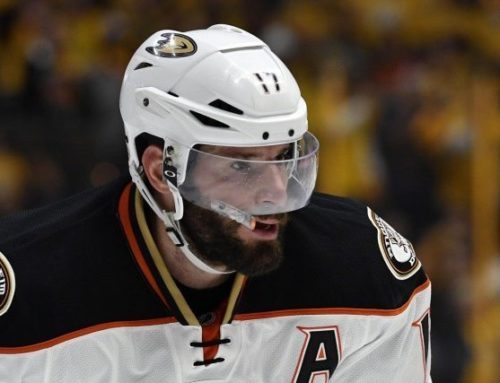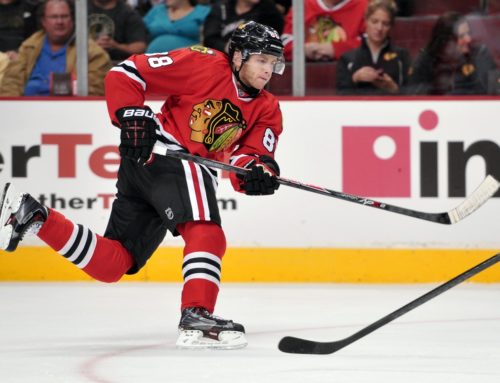The Business of Fantasy Hockey Part II – Intrinsic Value
Jeff Angus
2010-07-27

Welcome to the second installment of The Business of Fantasy Hockey. Throughout the offseason, Mike Colligan and I will discuss the similarities between a few of the principles that drive today’s business world and your fantasy hockey league. If you can get a better understanding of these ideas and how they impact your league, you’ll be many steps ahead of your competitors.
Part I, which introduced the series and discussed the philosophy of value investing, can be read here.
To quickly refresh, value investing is defined by Investopedia as "the strategy of selecting stocks that trade for less than their intrinsic values. Value investors actively seek stocks of companies that they believe the market has undervalued. They believe the market overreacts to good and bad news, resulting in stock price movements that do not correspond with the company’s long-term fundamentals. The result is an opportunity for value investors to profit by buying when the price is deflated.
Today’s Topic: Intrinsic Value
Intrinsic value is defined as "the actual value of a company or an asset based on an underlying perception of its true value including all aspects of the business, in terms of both tangible and intangible factors. This value may or may not be the same as the current market value."
Applying the definition to fantasy hockey, intrinsic value is "the actual value of a player based on an underlying perception of his true value, including all aspects of what he brings on the ice, in terms of both production and intangible factors. This value may or may not be the same as the current market value."
Another definition of the term I came across (I prefer this one), "One may think of the intrinsic value of an asset as its value “in a perfect world,” because one may not always be able to receive the intrinsic value. For example, the intrinsic value of a baseball card may be $10,000, but if prevailing market conditions render investors uninterested in buying baseball cards, one may only be able to sell the card for $5,000. That said, the line between intrinsic and extrinsic value is sometimes blurry."
The definition above ties in perfectly with buying low and selling high. If the current market conditions (how a player is valued in your league) are different than the intrinsic value of a player, an opportunity to either sell high or buy low exists.
Current market value is specific to individual leagues, and depends on a lot of variables (scoring categories, keeper rules, and so on). Market value is real and easy to define (the market value of a player is simply what you are able to acquire for him, or willing to pay to acquire him), however, intrinsic value often is not as simple to define. As Investopedia explains, there is no 'correct' intrinsic value. Two investors can be given the exact same information and place a different value on a company.
Information is everywhere. What you need to do is decide which factors (tangible or intangible) are most important to you, and then consistently evaluate these factors as they relate to all players.
We can’t tell you how to determine a player’s intrinsic value, but we can explain the factors that we use in our own leagues and feel are important to consider. It’s up to you to decide which aspects you want to incorporate into your own intrinsic value determination. Our factors are a mix of both quantitative (ones that can be measured) and qualitative (ones that cannot be measured) aspects. There are many, many, many more factors that can and should be used. This column isn't going to list every single one, but we'd love to hear feedback about ones that you have had success applying.
Quantitative Factors:
Game statistics
These are the most obvious quantitative, easy-to-measure factors. Standard hockey pool statistics like goals, assists, penalty minutes, shots on goal, plus/minus rating, and so on are usually the starting point for player valuation. There are numerous websites to use to find these statistics.
Identifying trends is a crucial aspect of using statistics properly. Further research and analysis is also very important to get an edge using statistics for player valuation. Every single person in your pool can go on to TSN or ESPN to see how many goals a certain player has scored over the past few seasons. However, identifying a trend (a strong starter or finisher) by conducting further research will enable you to improve on your ability to sell high and buy low.
It is hard to use game statistics alone to gain an edge, as even the most expert prognosticators are not fool-proof.
Points-per-game
PPG is a quantitative factor that can sometimes be overlooked. The biggest flaw with comparing players based on game statistics is the simple fact that not every player suits up for all 82 games. The easiest way to even the playing field is by looking at statistics on a per game basis. Hart and Art Ross Trophy winner Henrik Sedin finished with an impressive 112 points (1.37 points per game, second in the league to Alex Ovechkin) and will be one of the most sought after players in fantasy hockey next season. But what are the chances that twin brother Daniel Sedin is taken immediately after Henrik, as the points per game number indicates he should (1.35 per game)?
This is not to say you should be actively seeking out injury prone players who still manage to produce when healthy. Durability is an important quantitative measure to use when evaluating players. However, a fluke injury or two (like Sedin's broken foot) can sometimes drop a player's value below where it should be based on per-game statistics.
Time on ice (especially power play time)
Ice time is often the first indicator that a player is on the verge of breaking out. All things being equal, a 40-point player who plays 12-14 minutes per game will increase his point total with 15-16 minutes per game. More ice time indicates increased confidence in the player from the coaching staff, and/or a more important role with the team.
The important ice time to focus on as a poolie is power play time. Take Claude Giroux, for example. Many are sour on him this season because on paper, he appears to be the third line center behind Mike Richards and Daniel Briere in Philadelphia. Giroux may only see 12-15 minutes per game at even strength, but he will be an integral part of the top power play unit in Philadelphia, and his ice time should climb to 17-19 minutes per game. Don't get caught up in depth charts and how lines look on paper. Look at situational ice time, especially with skilled players on NHL teams with very deep forward groups.
Salary (both amount and structure)
If two players are competing for the same roster spot, the one making the higher salary will generally have a slight edge. Most teams don't want to pay a player a few million to either sit in the press box or ride the bus in the AHL. This is news to no one, though.
Another important aspect relating to salaries and player valuation is the structure of the contract. Players with a one-way deal (meaning they receive the same money at the AHL level as they would at the NHL level) also usually have an edge if they are competing for a roster spot with a player who possesses a two-way contract (the player receives considerably less money at the AHL level). Again, most teams are unwilling to pay full NHL salaries to AHL players. I devoted an entire section of the 2010-11 Pool Guide to this, highlighting more than 20 players with one-way deals who bear watching (one of them is profiled in this column).
Thanks in large part to Michael Lewis' 2003 book Moneyball, there has been a huge shift toward the use of statistical analysis in all professional sports. In hockey, we have tools like the Corsi Rating, quality of linemates (using DobberHockey's Frozen Pools section, every single line combination a player is a part of is tracked), quality of competition, and so on. The use of non-traditional statistics doesn't necessarily make player valuation any easier, but learning how to properly apply these methods and tools will make you an infinitely better poolie.
Qualitative Factors:
Qualitative factors are often easily observed but not easily measured. I listen to my gut on certain players, and I take my hunches seriously. Mike and I will highlight a few of the qualitative factors that we use when evaluating players.
Lineup spot safety
One qualitative aspect to consider when determining a player’s intrinsic value is how safe a player’s lineup spot is. An example of this is Jarome Iginla. Regardless of how Iginla performs, he is almost guaranteed a spot on one of Calgary’s top scoring lines. To contrast, the roles of Calgary's top three centers – Matt Stajan, Daymond Langkow, and Olli Jokinen, are far from guaranteed (especially Langkow, who may start the season on the IR). All three could be skating with Iginla on the top line, or just as easily on the third line with the likes of David Moss and Curtis Glencross.
Team style
The influence of a coach’s system on the production of players is another factor to consider. Aspects of it (goals for) can be measured quantitatively, but individual players often react in different ways to a change in coaching philosophy. After scoring 94 points in 2008-09, the writing was on the wall for Zach Parise. Most people assumed that he was going to have trouble hitting 90 points under Jacques Lemaire this past season. Parise regressed offensively and finished the season with 82 points. The Devils are going to be a more offensive club under new coach John MacLean in 2010-11, and a return to 90+ points for Parise should be expected.
The It Factor
I have written two columns about this in the past, profiling Parise and Jordan Eberle. My definition of the term: "All of the past greats have possessed that ability to think the game faster than the competition. From Rocket Richard to Wayne Gretzky to Sidney Crosby, they all have had an extremely high level of "hockey IQ." It is a trait that is easy to recognize in the elite, generational talents, but other players do possess it."
This is the ultimate qualitative factor. I have yet to devise a statistical measure of what it is, but I can easily spot it in players (usually in undersized scoring forwards). It is developed in undersized forwards because those are the players that have to be smart out on the ice to get noticed. The big, strong, natural athletes sometimes don't think the game very well, but they get scouted and ultimately drafted for physical gifts (the old adage that you can't teach size fits in here). One term associated with these smaller players is that they have the ability to be in the right place at the right time.
Every single poolie out there has some way of valuing players qualitatively. Perhaps you favor aggressive players. Maybe you favor players on your favorite team. Whatever your method of qualitative valuation is, find out why you do it, see if it has helped you win, and then adjust accordingly. A little bias is never bad, but make sure it isn't costing you a league title.
Case Study: Matt Lashoff
Game statistics
In 63 career games at the NHL level, Lashoff has one goal and 14 assists. He was acquired by Tampa Bay from Boston in 2008-09. The Lightning were miserable that season, and Lashoff was minus-7 with seven assists with the Lightning in 12 games after the trade. He averaged over 20 minutes of ice time per game during that span.
This past season, Lashoff was pointless in only five appearances with Tampa Bay. He saw less than three minutes of ice time per game in two of the five games as well.
The game statistics certainly are not in his favor.
Points-per-game
15 points in 63 games (a shade under 20 over a full 82 game season) is actually a decent number considering Lashoff didn't see much ice time (aside from those 12 games at the end of 2008-09, and almost half of his 15 points came during that stretch).
Salary
Lashoff's contract is both cheap ($500,000) and one-way. Both factors will work in his favor.
Lineup spot safety
Tampa Bay's top four consists of Mattias Ohlund, Victor Hedman, Pavel Kubina, and Mike Lundin. Lashoff will be competing with Matt Smaby, Ty Wishart, and Brett Clark for a spot on the bottom pairing. He has a one-way contract, and Wishart does not.
Team style
This is where it gets interesting. Guy Boucher loves having mobile defensemen to create offensively and jump into the rush on a consistent basis. Hedman will one day be this guy for Tampa Bay, but he isn't ready yet. Both Ohlund and Kubina are not mobile enough. Lashoff best fits the mould of even strength offensive defenseman if you take a look at all of the Lightning defensemen currently under contract (assuming Paul Ranger doesn't return).
The It Factor
I haven't seen enough of Lashoff to form an opinion on him, but he has been a proven producer at lower levels. From what I have seen, he is big, mobile, and possesses a pretty solid all-around offensive game.
As we said before, there is no one correct way to measure or define intrinsic value. How we’ve just weighed the factors and valued Lashoff may be totally different from your own chosen methodology. But it’s important to make sure your intrinsic value calculations end up as accurate as possible.
After each season, you should look back at your draft from the previous year and identify good and bad picks. Think about which assumptions you put too much emphasis on, and maybe others you mistakenly ignored. Tweak your intrinsic valuation system. By learning what works and what doesn’t, you’ll begin to notice far more opportunities to acquire players that are trading for less than their intrinsic values. That’s value investing.
Mike Colligan is an NHL analyst, as well as the Pittsburgh Penguins correspondent at The Hockey Writers. You can check out more of his work here or follow him on Twitter.





 BUF
BUF N.J
N.J PHI
PHI MIN
MIN VAN
VAN FLA
FLA TOR
TOR CGY
CGY